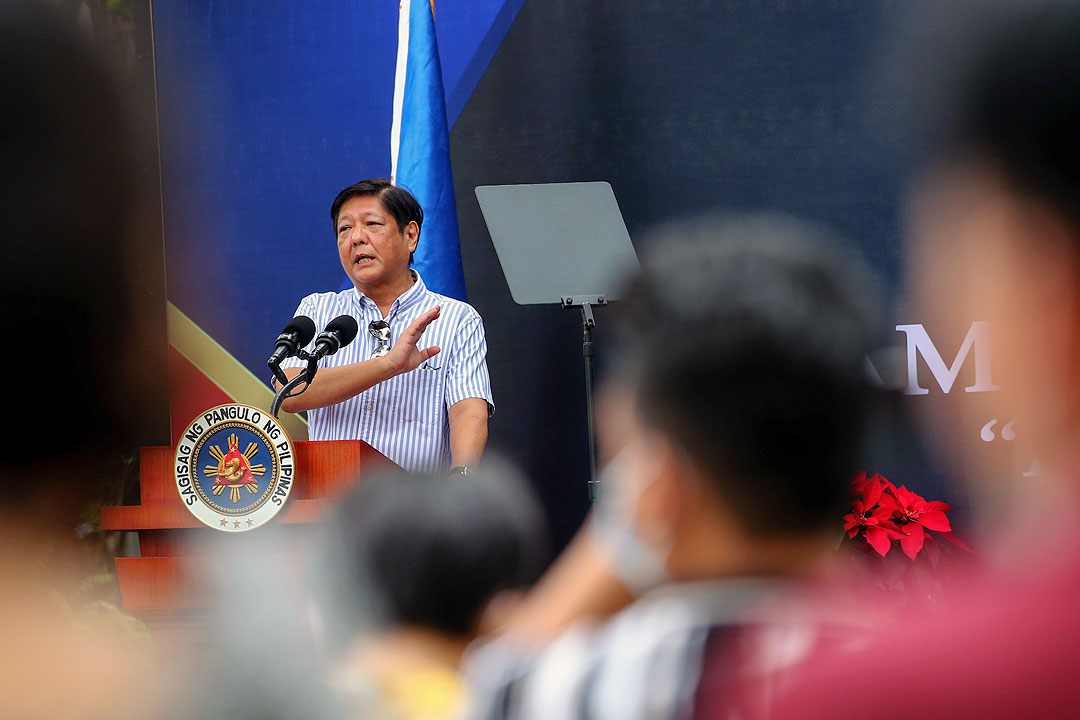Marcos says rice self-sufficiency short of 100% still adequate to meet PHL’s needs

PRESIDENT Ferdinand R. Marcos, Jr. said on Wednesday that the government will work towards achieving 97.5% rice self-sufficiency by 2028, a level which he described as adequate to meet the country’s needs.
The new target, which represents a climbdown from the Department of Agriculture’s (DA) former goal of 100% self-sufficiency by 2027, was announced during the Rice Industry Convergence Meeting at the National Irrigation Administration’s (NIA) headquarters earlier in the day.
“Ang aming ginawang target (The target we set) is 97.5% self-sufficiency by 2028,” adding in remarks to reporters on the sidelines of a Government Service Insurance System (GSIS) event that 100% is not strictly necessary.
“At 97%, masasabi na nating mapapakain (ang) lahat ng ating kababayan (97% is an adequate level for feeding the population),” he added.
The DA, which Mr. Marcos also heads, said in April that it expects to achieve 100% self-sufficiency in rice by 2027 through the Masagana Rice Program 2023-2028.
The program aims to stabilize the rice supply at between 24.99 million metric tons (MT) and 26.86 million MT, in the process lowering growth in rice prices to less than 1% annually.
It also seeks to increase farmer incomes by 54% and “ensure rice availability and safety at all times by maintaining sufficient rice buffer stock at the National Food Authority (NFA), as mandated by the Republic Act No. 11203 or the Rice Tariffication Law.”
Mr. Marcos said during the Wednesday meeting at NIA that participants discussed consolidating farms and agricultural mechanization, which he called critical to achieving increased production.
“Also, digitalization so that we provide good data to our farmers…” he added. “We are trying to consolidate the farms so that we can take full advantage of the economies of scale with new technologies.”
Mr. Marcos said the government will be making use of new farm technology to attract young people interested in agribusiness.
“We engage (young Filipinos) with new technology because they will be the ones who will operate those systems,” he said. “And that will make it interesting for young people.”
Separately, the Presidential Communications Office (PCO) said in a statement that Mr. Marcos approved the Masagana Rice Industry Development Program (MRIDP) during Wednesday’s meeting.
“As a response to the challenges in the rice industry, the DA, which is concurrently headed by the President, formulated the MRIDP to support rice farmers, increase rice production, and strengthen the rice value chain,” the PCO said.
“The program will be carried out through several strategies such as climate change adaptation; farm clustering and consolidation or convergence of intervention; value chain approaches; and digital transformation,” it added.
The PCO said a key component of the MRIDP is the convergence of all stakeholders involved in the development of the rice industry in order to pool resources, share knowledge, and coordinate efforts to achieve sustainable rice production and raise farm incomes.
Citing DA data, the Palace said the 2022 palay harvest was marked by declines in yields and hectares planted to rice.
Of the 19.76 million MT of palay harvested in 2022, 14.94 million MT (75.6%) came from irrigated areas and 4.82 million MT (24.4%) from non-irrigated areas, it said. — Kyle Aristophere T. Atienza



